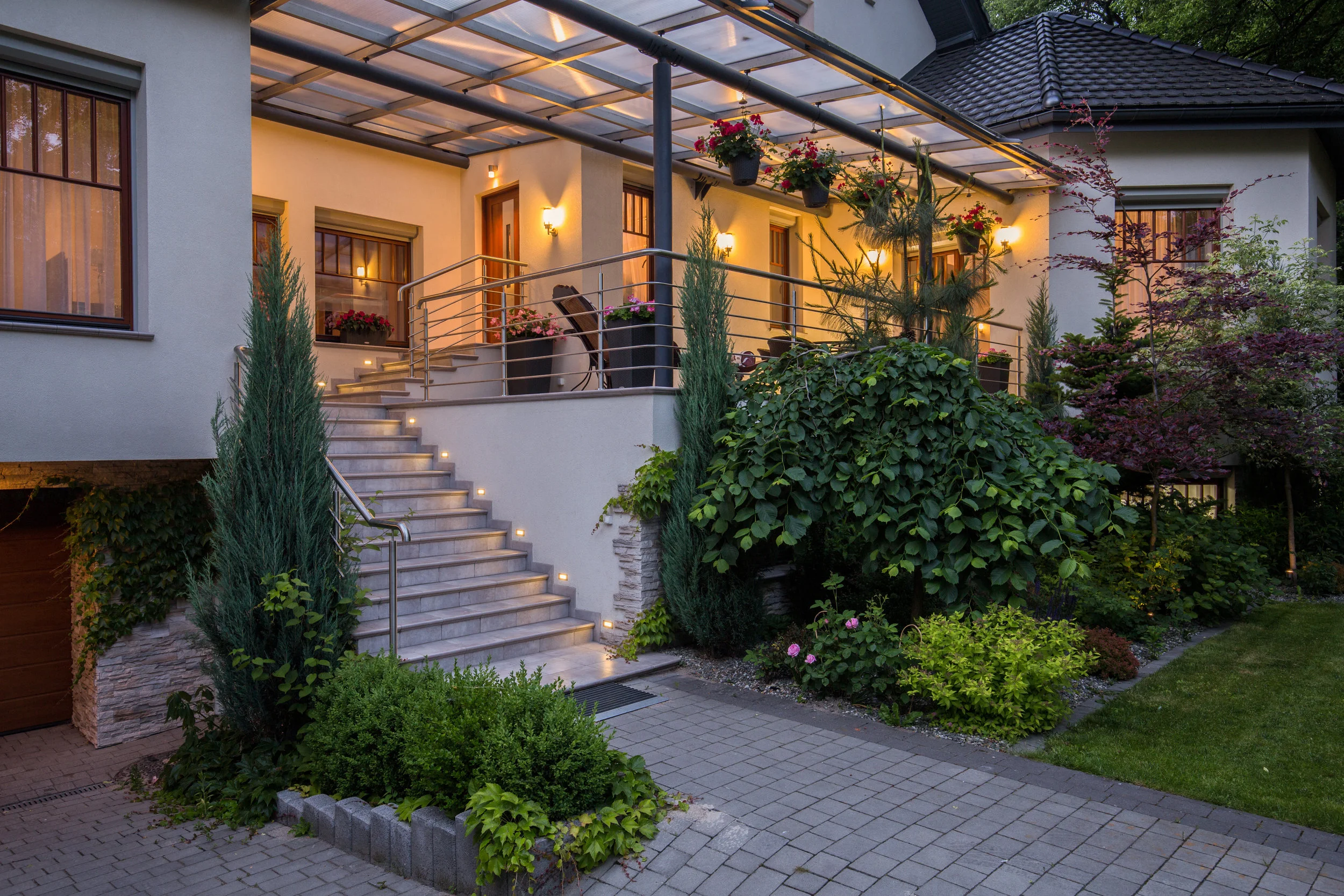Various landscape lighting techniques can be used to add more interest and drama to a Laconia, NH, landscape. Through the strategic placement of lights, you can draw attention to parts of the landscape and conceal others. You can create the illusion of space or make focal features appear more dominating with the flick of a switch. Read on for some guidance in using uplighting and downlighting to achieve various goals in your landscape design.
Uplighting: How It’s Done
Uplighting involves the installation of lights at ground level, or below, that project their light upward. This is generally done to draw attention to a vertical feature like a tree, shrub, or pergola. Uplighting can be achieved using well-lights, which are installed flush to the ground, or directional uplights that are perched upon short posts at a slightly higher level. Directional uplights are typically fitted with hoods to prevent an unpleasant glare. Fixtures can also be obtained to wash entire walls with light and cast lovely silhouettes. This is termed backlighting, or silhouette lighting, and can be considered a form of uplighting.
Related: The Most Innovative and Energy-Efficient Outdoor Lighting Designs for Your Concord, NH, Landscape
When to Uplight
Uplighting serves as an effective and eye-catching way to highlight your favorite landscape features. As the light is directed in a vertical trajectory, this technique works best when focused on vertical features like trees and architectural columns. You can showcase the interesting bark, captivating branches, and delicate leaves of a particularly beautiful tree in your landscape. Uplighting columns can give them a dramatic appearance and cast pleasing shadows on any nearby walls. Landscape features like sculptures and fountains can add character to the entire “nightscape” if showcased. Without uplighting, these interesting features tend to disappear into the cover of darkness, leaving your landscape dull and flat.
Downlighting: How It’s Done
Downlighting entails placing a light fixture in a high position and angling it downward. Common spots in which downlighting fixtures are placed include the branches of trees and underneath the eaves of houses. The higher up a fixture is positioned, the greater the area illuminated by its light. The type of fixture you choose will depend on the amount of light you require and how bright you desire it to be.
Related: Set the Mood for Your Outdoor Dining with Outdoor Lighting in Concord, NH
When to Downlight
While uplighting is targeted at vertical structures, downlighting is used to illuminate features that are closer to the ground. It is more subtle than uplighting and is, therefore, a better option for seating areas for which you want clear visibility without being distracted or discomforted by the artificial light. Downlighting is also a suitable option for any area of high foot traffic because it eliminates the risk of tripping over light fixtures. Above all, downlighting enhances the safety of outdoor living spaces after dark.
However, downlighting also bears extensive aesthetic potential. It generally helps to foster a warm, welcoming atmosphere in outdoor rooms by washing them in a soft glow. Moonlighting is a technique that emulates the look and feel of natural moonlight and can be achieved by mounting a spotlight high up in a tree and angling it downward. The shadows of branches will be cast on the floor of your landscape and “moonlight” will trickle through the gaps between them.


